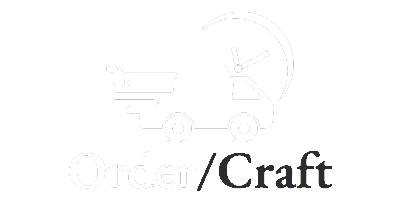Odoo has become one of the most popular ERP and CRM systems for good reason. Out of the box, it comes with a wide set of modules that cover everything from sales to accounting to inventory. For many businesses, this flexibility makes Odoo an excellent starting point, it's quick to get running, and the default tools usually meet most day-to-day needs.
But as teams grow, processes get more complex, and data flows across more departments, those same defaults can start to feel restrictive. Workarounds creep in, reporting takes longer, and the system that once made things easier can begin to hold things back.
Why Odoo Feels Right at the Start
When businesses first adopt Odoo, the appeal is obvious. The platform comes with a wide library of modules that can be switched on and put to use almost immediately. Need a sales pipeline? It's there. Want basic accounting, inventory tracking, or a helpdesk? Those too. The defaults often cover 80% of what a small or mid-sized team needs without any heavy lifting.
That's part of what makes Odoo such a strong first step. Teams get the benefit of an ERP/CRM without the usual complexity or cost of building something from scratch. Processes feel streamlined, departments are connected in one system, and for a while, the defaults really do keep everything moving.
It's only later, when operations expand and business rules get more nuanced, that those simple setups start to show their limits.
Common Roadblocks With Odoo Defaults
As businesses grow, the same features that once felt flexible can start to create friction. It's not that Odoo stops working, it's that real-world processes don't always fit neatly into the standard modules. Here are a few of the pain points that tend to surface:
Rigid workflows
Odoo's default pipelines and approval flows are great for simple processes, but they don't always adapt to complex business rules. Multi-step approvals, territory-based sales assignments, or custom quoting logic can become difficult to manage without extra development.
Scaling challenges
The system handles early growth well, but as records multiply and transactions increase, performance can slow down. Workarounds like exporting to spreadsheets creep in, and suddenly the "all-in-one" system isn't the single source of truth anymore.
Reporting gaps
The dashboards that once provided quick insights can fall short when teams need advanced KPIs, compliance-ready reports, or detailed attribution across departments. Without customization, reporting often requires manual consolidation.
Integration friction
Odoo connects to many tools out of the box, but the reality of enterprise systems is rarely that clean. Shipping platforms, finance software, or industry-specific databases don't always sync smoothly, leading to duplicated data or missing links in the workflow.
Signs Your Business May Need Custom Development
Every team reaches a point where the standard Odoo setup no longer matches the way they work. It doesn't mean you chose the wrong system, it just means your business has grown more complex than the defaults were designed to handle.
Below are some of the common signs to look for:
- Manual workarounds are piling up
If your team is relying on spreadsheets, duplicate data entry, or side systems outside Odoo, it's a sign that the workflows inside the platform aren't keeping up. - People are bypassing Odoo altogether
When sales or operations teams avoid certain modules because "they don't work for us", it's usually because the processes don't reflect the realities of your business rules. - Data isn't lining up between systems
Integration gaps can show up as duplicate customer records, mismatched invoices, or reports that don't add up. If reconciling data has become a regular task, custom development may be needed. - Bottlenecks keep slowing things down
Whether it's order fulfillment, financial close, or reporting cycles, recurring delays often point back to system limitations rather than team performance.
Recognizing these patterns early makes it easier to decide where custom development can have the most impact, before inefficiencies start multiplying across departments.
Practical Paths Forward
Running into limits with Odoo doesn't mean you need to overhaul your entire system. In many cases, small, targeted improvements can make a big difference.
A few approaches teams often take when they've outgrown the defaults:
Start with focused plugins
Rather than reworking entire modules, small custom plugins can extend Odoo in the areas where it struggles most, whether that's approval rules, pricing logic, or scheduling quirks.
Build reliable integrations
If your business relies on multiple systems, strong integrations are key. Clean, testable connections between Odoo and finance tools, shipping platforms, or industry-specific databases help keep data consistent across the board.
Extend existing modules
Sometimes the best path is to take what Odoo already provides and layer in the missing logic. Extending Odoo modules lets you preserve familiar workflows while customizing them to your business needs.
Plan for scale, not just fixes
It's tempting to patch gaps as they come up, but looking ahead saves time and cost in the long run. Designing changes with growth in mind helps ensure that Odoo continues to support your business as it scales.
Moving Beyond the Defaults
Outgrowing Odoo's standard setup isn't a failure, it's a sign that your business is evolving. The platform is built to be extended, and many teams reach a stage where custom Odoo development becomes the natural next step.
By recognizing the signs early, whether it's manual workarounds, reporting gaps, or integrations that don't hold up, you can address the problems before they start slowing down the whole operation.
If your team is starting to see these limits, you don't need to start over. With the right development approach, Odoo can be shaped to match even the most complex workflows and continue growing alongside your business.
If you’re running into these challenges, take a look at how we approach Odoo Development + Workflows.



